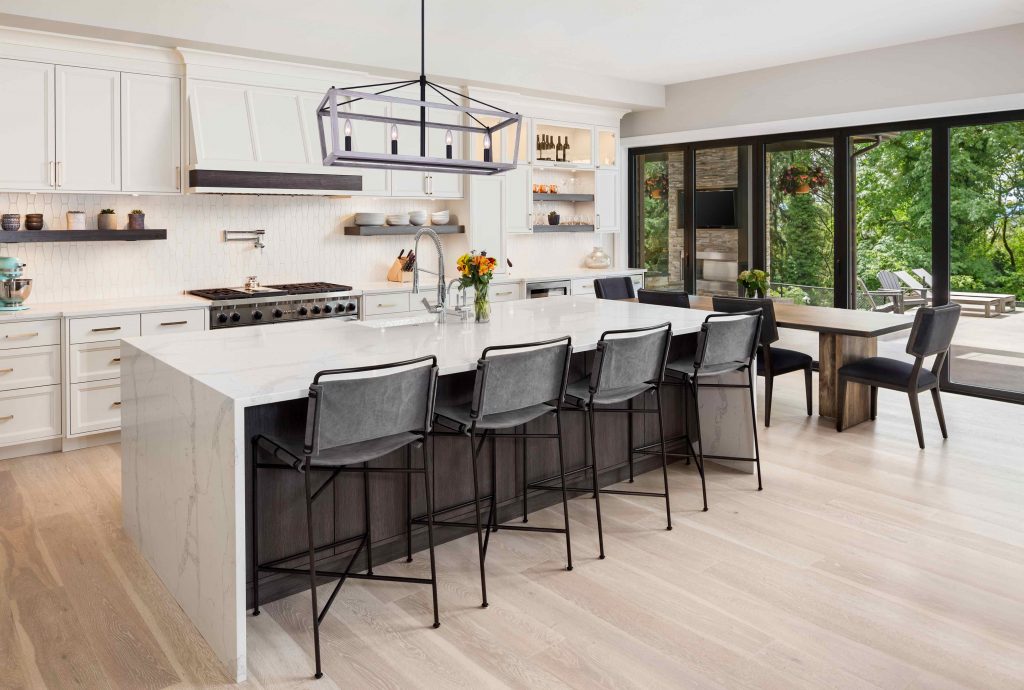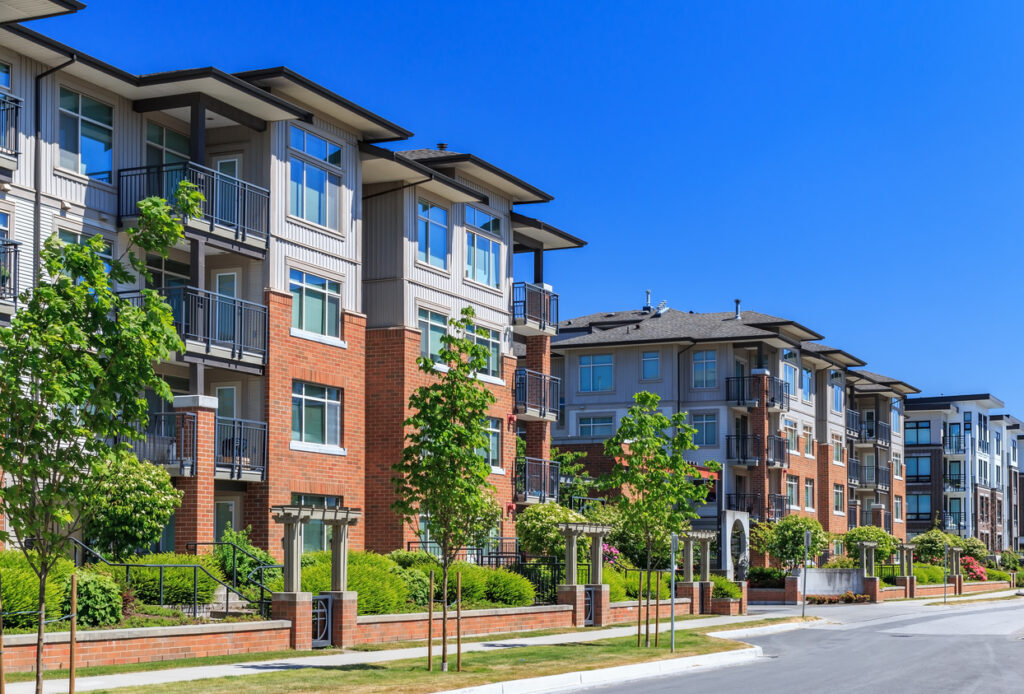With most of us spending extra time at home this year, there’s certainly a backlog of projects you’ve been hoping to get to when you have the time. New Year’s resolutions aren’t just for you, they can be for your home too! So why not take some time this holiday season to plan your house goals for 2021.
From cleaning every nook and cranny to finally getting around to building a new headboard for your master bedroom, we’ve got all affordable DIY New Year’s projects you could ask for.
Cleaning the bathroom tiles and grout
Grout is one of those “set it and forget it” things we often overlook in a home. But grout is actually quite porous and can easily stain in high-traffic areas like kitchens or hallways.
Get yourself a stiff bristle brush and some hydrogen peroxide, or another type of grout cleaner, and start scrubbing! You’ll be surprised by the difference freshly cleaned grout makes to your tiled floor or wall overall.

DIY an accent wall
If you’ve been thinking about a refresh but aren’t sure what to do, rather than repainting an entire room try an accent wall!
You can use wallpaper or a mural to highlight a wall in a room or go the full distance and DIY wall paneling to create a more built-in and authentic effect.
Accent walls can truly transform a room and can be done for well under $300 if you rent the necessary tools and equipment.
Baseboard maintenance
Oh baseboards. Those tricky out of sight, out of mind accessories. Except that baseboards are rarely completely out of sight. Baseboards are a friend to dust and grime and require some grooming to keep them in good condition.
So, maybe this year’s resolution involves a little baseboard cleaning. Not to worry, it’s actually really easy. All you need is some soapy water and a dishcloth (OK, and maybe a few hours to get the job done).
If your baseboards are starting to separate from the wall, grab some white baseboard caulk and work it into the crevice using a 5 in 1 tool, or your finger, to reseal them to the wall.
 https://unsplash.com/photos/NrR6ByFMBas
https://unsplash.com/photos/NrR6ByFMBas
Eliminate office drawer and shelf clutter
We’ve been spending a lot of time in our home-offices this year. So naturally, things have piled up. With work-from-home orders extending into the new year and beyond, it’s a good time to clear out the clutter in your workspace.
Start by going through all cabinets and drawers. Toss any loose papers, receipts, and miscellaneous items you don’t need. Order some drawer organizers, or get your hands on a couple of small baskets to group loose items together.
Donate any books you don’t plan on re-reading, and store old notebooks in a box for safekeeping.
Deep cleaning the oven
While some might regularly take care of this chore, others leave it as a once-a-year activity.
This task takes about an hour and can be done for under $20! Snag some oven cleaner from your local grocery or department store, as well as a rag and scrub brush.
Remove everything from your oven and spray it down, including the back, sides, top, and bottom. Let sit for as long as your cleaning product suggests, usually 30 minutes or more. Remove the racks, spray them down, and leave them to sit for 20 minutes.
Once the appropriate amount of time has passed, take a wet rag and wipe down all surfaces you sprayed. Rinse your racks in the sink, or outside with a garden hose, and voila! You’re done!
 https://unsplash.com/photos/LGJ6MkX-la4
https://unsplash.com/photos/LGJ6MkX-la4
Cleaning hair out of the drain
Not for the faint of heart, this one’s for the folks truly committed to those home-inspired resolutions.
If you’re handy, you can fashion an easy drain snake out of a wire hanger following this tutorial. Otherwise, head to your local pharmacy and pick up a bottle of CLR or Drano for an easier, less-involved option. Although, there’s something oddly satisfying with pulling it out yourself.
Washing curtains/dusting blinds
Likely not on your laundry list are your curtains. These things just stay clean forever, right? Wrong! Curtains are a dust magnet, and overtime can actually lose their colour and vibrancy from the amount of dust they hold onto.
Read the care instructions before throwing them in the wash—some curtains need dry cleaning, while others can be hand-washed.
If blinds are your window covering of choice, take a wet cloth to them and lightly brush over them to reveal a good-as-new shine.
 https://unsplash.com/photos/iAftdIcgpFc
https://unsplash.com/photos/iAftdIcgpFc
Build your own headboard
Headboards can really upgrade a bedroom, but when purchased are quite pricey! But headboards are surprisingly easy to DIY. All you’ll need is some plywood, foam, and fabric as well as the right building tools.
Make your own tufted headboard for under $150 in an afternoon.
Steam cleaning the carpets
Every once in a while you’ll want to clean your carpets to keep them from collecting dirt, dust, allergens, and stains.
Before steam cleaning you’ll want to remove all furniture, vacuum and spot treat any tough stains. Then, you can either use a carpet cleaner bought online or rented from your local hardware store for under $150! So easy, and so worth it.
 https://unsplash.com/photos/NGb91VwnOWY
https://unsplash.com/photos/NGb91VwnOWY
Take apart and clean your lights
Flush mount lighting and ceiling fans are prone to collecting dust and are rarely (if ever) cleaned. Take it upon yourself to go the extra mile and dust off those ceiling lights, your lungs will thank you later!
Cleaning the fridge
Yes, it’s a grubby job, but there’s nothing like a sparkly clean fridge to lift one’s cooking spirits. Start by clearing out your fridge and emptying containers filled with old food and sauce you completely forgot about (gross, but worth it for the environmental impact of saving waste!)
Next, remove any drawers and shelves. Take them to a bathtub or laundry sink and spray them down with some antibacterial cleaner. While they sit, spray down the inside of your fridge and wipe with a damp cloth. Rinse off the shelves and drawers and place them back in the fridge.
Once it’s time to put things back in the fridge, opt for an organization method that works for you. We love the suggestion of using the top fridge shelf for ready-to-eat, or close to expiry items!
 https://unsplash.com/photos/DlO0yz4U67A
https://unsplash.com/photos/DlO0yz4U67A
Re-tile your kitchen backsplash
2020 brought a wave of hot new tile trends that will leave older kitchens looking outdated. Most kitchen backsplash tiles range from $4-10 a square foot. So, depending on the size of your kitchen, this is a project you can do for under $300!
Follow this simple DIY tutorial to nail your first backsplash project!
https://www.youtube.com/watch?v=uDLtF9ET6rY
Whatever your New Year home resolution, make sure to take it slow. Don’t rush into a million projects; start with the things you think will give you the most satisfaction and take it from there!
Source: Realtor.ca/blog
https://www.realtor.ca/blog/postpage/16461/1367/12-simple-diy-resolutions-under-300


 Scott McGillivray Collection
Scott McGillivray Collection




 Image via
Image via  Image via
Image via  Image via
Image via  Image via
Image via  Image via
Image via  Image via
Image via 




 Image via
Image via  Image via
Image via  Image via James Bombales
Image via James Bombales
 Image via
Image via  Image via
Image via  Image via
Image via 







 Image via
Image via  Image via
Image via  Image via
Image via  Image via
Image via  Image via
Image via  Image via
Image via  Image via
Image via  Image via
Image via  Image via
Image via  PImage via
PImage via  Image via
Image via  Image via
Image via  Image via
Image via  Image via
Image via Image via
Image via  Image via
Image via  Image via
Image via  Image via
Image via 